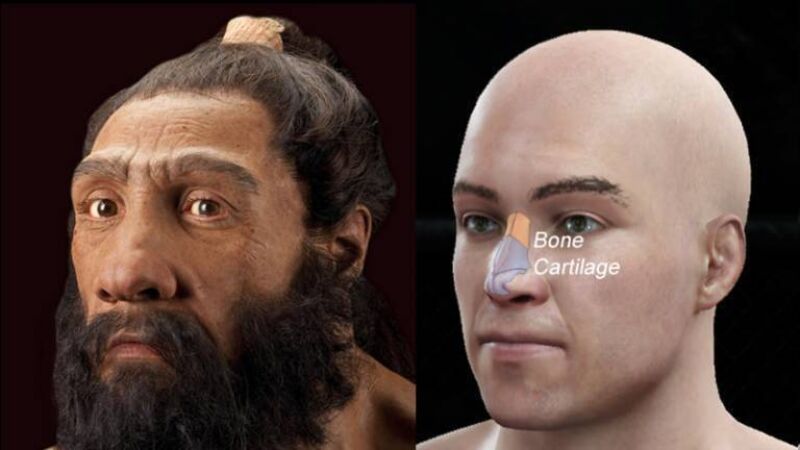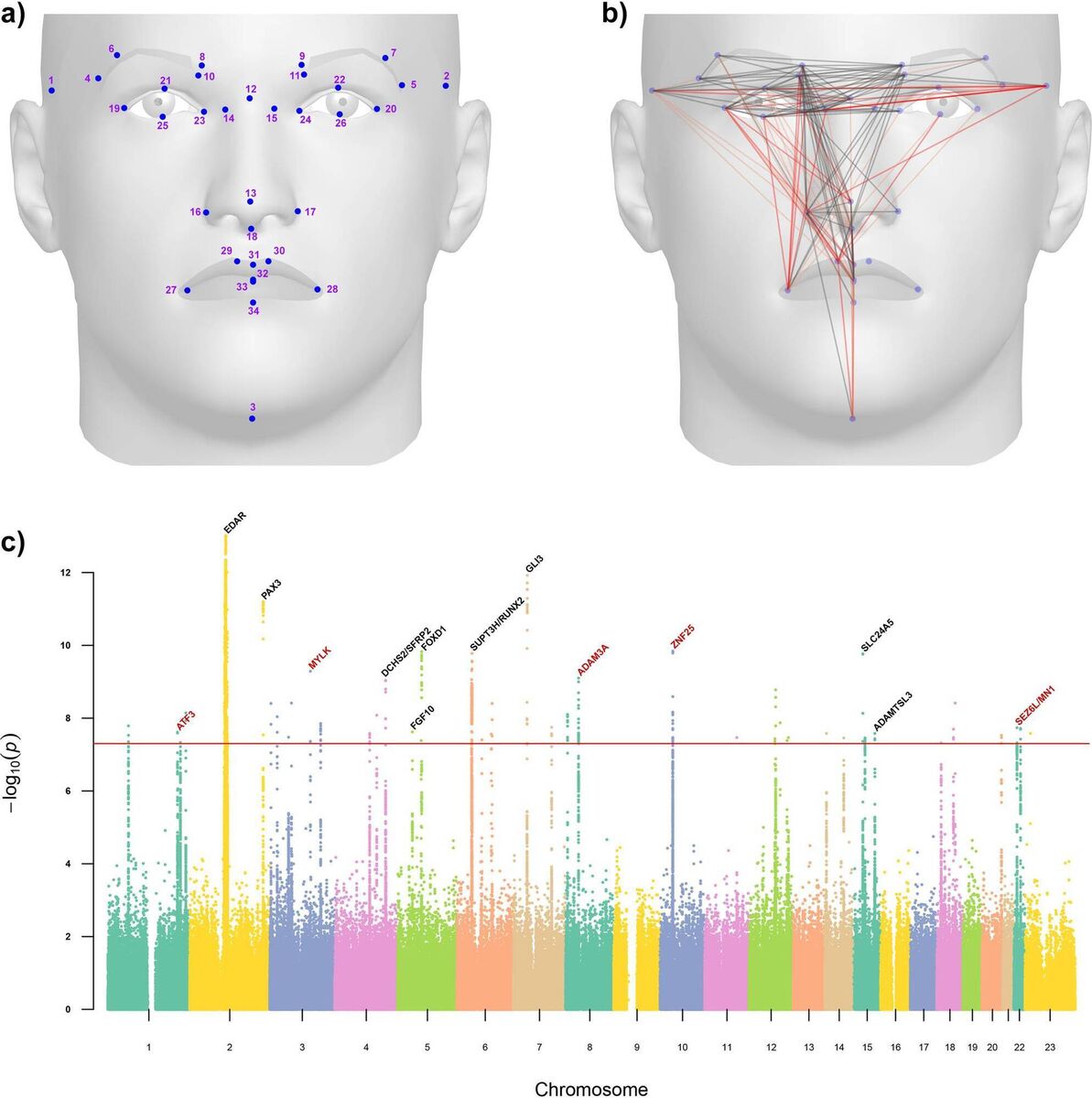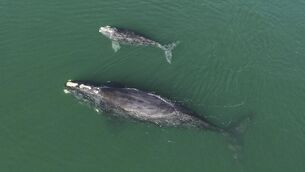Richard Collins: Nose shape gene inherited from Neanderthals

Humans may have inherited nose shape gene from Neanderthals, study suggests. Image: Kaustubh Adhikari/UCL
What did the Neanderthals ever do for us? Quite a lot, it seems, if scientists at University College London (UCL) are to be believed.
We have an ambivalent attitude to these ‘archaic humans’. Edwin Landseer’s makes the scalp tighten, Audubon’s bird portraits take our breath away, but artists’ impressions of Neanderthals are ominously surreal. The thought that our ancestors may have had intimate relations with these distant cousins is disturbing. Can such ugly creatures really be ‘one of us’?
Beauty is in the eye of the beholder, said the man who kissed the cow. Our Homo sapiens ancestors, it seems, were not too choosy about sexual partners. The Neanderthal genome was mapped 15 years ago. Comparisons between it and our modern human one, show that we have bits of their DNA in our cells. It has even been suggested that these, the original Europeans, didn’t wither into extinction. Instead, through interbreeding with our ancestors from Africa, their line may have been absorbed into ours.
Neanderthals were not strong on glamour but, ironically, UCL research just published shows that our faces, so crucial to an attractive appearance, show distinct traces of their legacy.
Up to now, studies of facial evolution have focused mainly on European and North American individuals, whose noses show less variation in size and shape than those of people living in some other regions of the world.

Facial characteristics are particularly varied among Latin Americans. The UCL team collected 6,630 DNA samples from volunteers in South and Central America. About 50% of people included in the study were of mixed European ancestry, 45% were native to the Americas, and 5% were African. The participants’ faces were photographed and their features examined under 14 headings. Traits and facial dimensions, determined from the photographs, were found to correlate with specific genetic markers.
Four Neanderthal-sourced sequences were identified. Three of them help determine the length, width, and pointiness, of our noses. The fourth influences chin protrusion.
Dogs foxes and polar bears, great sniffing specialists, have elongated snouts. Their extended nasal passages help them identify substances present in the air. By comparison, humans have a very poor sense of smell. It seems unlikely, therefore, that our prominent noses evolved to help us detect odours. It is much more likely that they helped to reduce the temperature and moisture-content of the air as we inhale.
In our new study, we report several new genes linked to face shape variation in diverse ethnicities.
— Kaustubh Adhikari (@kaustubhad) May 8, 2023
In particular, a gene variation possibly inherited from the Neanderthals among Native Americans and East Asians seems to contribute to taller noses.https://t.co/3MGDUaA17j
The UCL research supports this conclusion. Nose size and shape, it shows, vary between people living in differing climates. European noses, for example, tend to be longer and narrower than those of people native to the tropics, where the air is warmer than it is in northern latitudes. According to a UCL press release, "a particular gene which led to a taller nose may have been a product of natural selection, as ancient humans adapted to a colder climate after leaving Africa".
Nor is this the first such discovery made by the UCL scientists. In 2021 they identified a gene "influencing lip shape in modern humans", which had come from another ancient hominid; the Denisovans. Like the Neanderthals, these Asian dwellers became extinct millennia ago.








